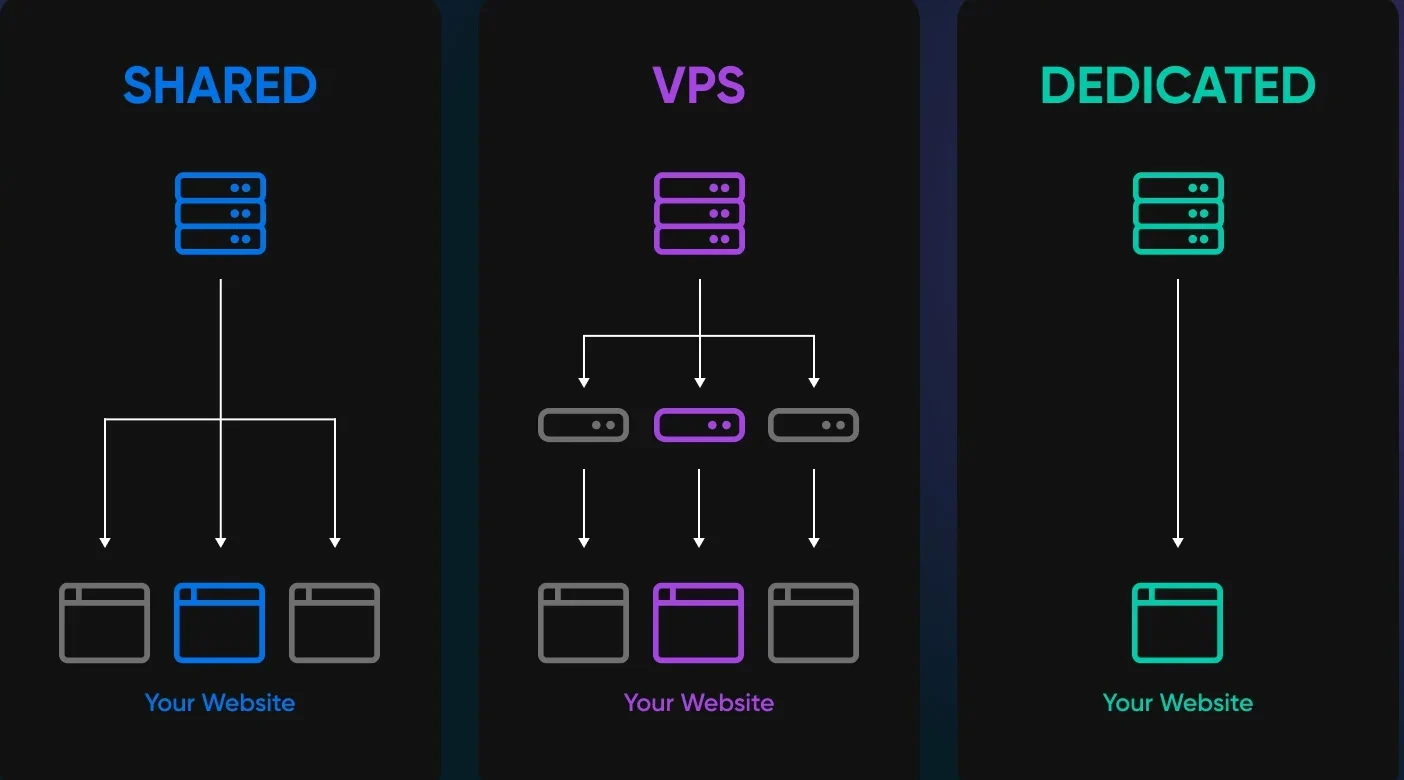
Have you ever tried booking a family trip and realized you don’t need a full villa, just a cozy Airbnb? But then again, sometimes that shared apartment just doesn’t cut it. Web hosting works the same way. Your site might be fine in a small space today, but will it still be comfortable if the guests keep pouring in?
Whether you’re launching your first blog, running an online store, or managing a client-heavy portfolio, choosing the right hosting is where it all begins. But here’s the kicker—most people don’t even know the difference between shared hosting, VPS, and dedicated servers. So, let’s roll up our sleeves and get into it.
(This guide is brought to you by the editorial team at www.too.ae — made for real humans, by real humans.)
What shared hosting actually means
Shared hosting is like renting a room in a crowded student dormitory. You all share the same bathroom, kitchen, and Wi-Fi. And if someone burns the pasta, the whole building smells like smoke.
Technically speaking, your website is placed on a server that also hosts hundreds—sometimes thousands—of others. You share the CPU, RAM, and bandwidth. It’s cheap, yes. Some plans in Turkey, for example, start from just 20₺ a month. That’s barely more than a simit and çay combo.
But you’re also sharing everything. If another website gets a traffic spike or starts hogging resources, your site slows down. Security’s another concern. If one site gets infected, your corner of the server is exposed too.
Still, for small businesses, personal blogs, and low-traffic websites, it’s the most budget-friendly start. And hosts like Turhost or Veridyen make it dead simple to get going in Turkish or English. That local touch can be a lifesaver if you hit a tech snag at 2AM.
Why VPS feels like your first apartment
Now imagine you’ve moved out. You’ve got your own studio flat, with your own keys and privacy. That’s what a VPS (Virtual Private Server) feels like. You’re still in a building with others, but you’ve got walls between you.
In technical terms, VPS uses virtualization technology to carve out a dedicated portion of a server’s resources—just for you. You get guaranteed CPU, memory, and storage allocations, so noisy neighbors won’t slow your site down.
This is great for websites with moderate traffic, small e-commerce platforms, or developers who want more control. It’s also scalable. If you suddenly get more traffic—say your product went viral on TikTok—you can quickly upgrade your resources without moving servers.
In Istanbul, for example, providers like Netinternet offer local VPS plans with SSD storage and Turkish IP addresses, which help with SEO if your audience is primarily local. Starting prices? Around 80-100₺ monthly.
Still, with great power comes a little more responsibility. Most VPS plans are semi-managed or unmanaged. That means you’ll need some technical know-how—or at least someone who does. If configuring firewalls or installing cPanel sounds scary, you might want to choose a managed VPS provider.
What dedicated hosting really offers
This is the luxury villa of hosting. No roommates. No shared kitchen. No one eating your leftovers. You rent the entire house—well, the server.
Dedicated hosting means you get an entire physical server to yourself. That means full control, top performance, and maximum security. You can install any OS, run custom software, and optimize your setup to match your website’s specific needs.
This is usually the go-to for high-traffic websites, large e-commerce operations, or applications handling sensitive data. Think hospital record systems or fintech platforms.
In terms of cost, it’s naturally the priciest. In Turkey, monthly prices for dedicated servers start around 1,500₺ and can easily reach 5,000₺ depending on the specs and provider.
Is it overkill for most sites? Probably. But if your business depends on speed, uptime, and security, then it’s not a luxury—it’s insurance.
Providers like Radore and Hostinger offer dedicated servers with Turkish data center locations. This is crucial if your site handles local traffic, as latency matters.
Which one is best for SEO performance?
This is one of those under-the-radar questions that only becomes obvious when things go wrong. Shared hosting might seem fine, but if your neighbor is a spammy site, Google could associate your IP with bad actors. That’s a black mark you didn’t earn.
A VPS or dedicated server gives you a clean slate. You control the IP reputation, the server speed, and uptime. These all impact your SEO rankings.
If you’re targeting keywords like Dubai’de en iyi web tasarımı, or Türkiye’nin en hızlı hosting firması, server location also plays a role. A server close to your audience cuts page load time. And every 100ms shaved off can mean more conversions.
The hidden costs nobody tells you
Here’s the truth few companies put on the pricing page. Shared hosting plans often offer irresistible entry prices—but check the renewal rates. That 19₺ plan might jump to 59₺ in the second year.
VPS and dedicated plans sometimes charge extra for backups, firewalls, or control panels. Want a managed service? That’s another 30–50% on top.
And don’t forget the unseen costs of downtime. If your site goes down during a weekend sale, that’s not just embarrassing—it’s money lost. For local businesses in cities like İzmir or Ankara, a few hours of outage could cost thousands in revenue.
Do you need root access, really?
If you don’t know what SSH or command line means, you probably don’t need root access. But developers and IT teams love it. It allows you to configure everything—from your firewall to your PHP version.
Shared hosting rarely allows root access. VPS sometimes does, and dedicated hosting always does. So if you’re planning custom installations or server-wide scripts, VPS or dedicated is your only route.
What about local support and language?
One often-overlooked factor is language. If your hosting provider offers support only in English, navigating issues can be tough—especially during high-stress moments.
Turkish hosts like Natro or Güzel Hosting offer full Turkish support, including control panels. That’s a relief for small businesses or freelancers who just want to focus on their work, not brush up on tech lingo.
And www.too.ae editors have tested both local and global hosts—we’ve seen firsthand how language can make or break a troubleshooting session.
When to upgrade: signs your hosting isn’t enough anymore
There are red flags. If your site takes more than 3 seconds to load, or if traffic spikes crash it, that’s a clue. Are you constantly running out of bandwidth? Does your site freeze during checkout?
These are not just annoyances—they hurt your business. If you’re selling handmade jewelry in Beşiktaş, a crashed site means lost orders. If you’re running a blog and readers can’t load your latest article on time, they won’t come back.
Upgrading doesn’t mean breaking the bank. Sometimes, a small step up to VPS brings massive improvements in reliability and speed.
So, what’s best for you?
There’s no one-size-fits-all. Shared hosting is ideal if you’re just starting and want to save money. VPS is for those ready to take control and scale. Dedicated servers are for high-demand, high-stakes operations.
Take stock of your website goals. Think about your traffic, technical skills, and budget. And always plan for growth. Because nothing hurts like outgrowing your host and migrating under pressure.
This piece was written by the editorial team at www.too.ae to help you make smart hosting choices—without the fluff.
